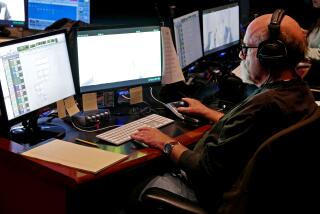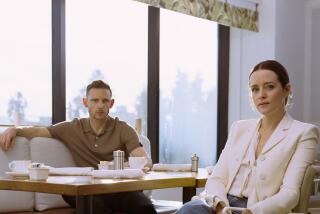Sound decisions in ‘All Is Lost’

Supervising sound editors Steve Boeddeker and Richard Hymns put their sea legs to the test on the open-water thriller “All Is Lost.” Directed by J.C. Chandor and starring Robert Redford, the nearly dialogue-free film tells the story of a man whose 39-foot yacht collides with a shipping container on the high seas. As sound editors, Boeddeker, Hymns and their colleague Brandon Proctor collected and created sounds heard in the film — a symphony of flapping sails, creaking decks and pounding waves. Boeddeker served as the film’s sound designer who conceptualized the overall auditory experience from start to finish; he also collaborated with Proctor to do the film’s re-recording mix: blending the sound effects, score and sparse dialogue into the finished soundtrack.
How did you get involved in this project?
Hymns: I was getting married in a very small wedding in Napa. And my wife used to work for Robert Redford, so he showed up, and he was talking about this project that he’d just finished. And he talked about the fact that it was about sailing and there wasn’t any dialogue. You know, it’s a sound editor’s dream — especially somebody who loves the water.
RELATED: ‘All is Lost’ sound effects, explained
Given the near absence of dialogue, do you consider this a quiet film?
Boeddeker: So many people, like reviewers, have said, “Oh, this is almost a silent movie.” And it’s really ironic because there’s actually not a moment of silence in it. There are always sail flaps going and creaks and moans and groans. And those are the things that J.C. said he wanted to be the Redford character’s comfort zone: those sounds that were constantly there.
So did you record sound on the same boats that we see in the film?
Hymns: No, not at all. They’re three different boats of friends of mine. There was a small craft warning in the [San Francisco] Bay, so we went out on that day. We were the only boat out there. It was pretty stormy and crazy, and Brandon, Steve and I all had recorders.
Boeddeker: We all had headphones on, so we were not really paying attention to what was going on, because we were so focused.
Hymns: And that particular boat was chosen because the interior creaked like mad. It was a fiberglass boat, but the teak and all the wood inside were just creaking, especially in the weather we were in. It was a lot of activity of banging of waves against the side. And another boat I picked because the guy had a damaged bilge pump, and there’s a whole bilge pump thing in the movie. And so I recorded his bilge pump, which he hadn’t fired up in a year. And so it was all these disgusting toilet sounds. And then when the water finally came through, it started spitting out all kinds of brown junk — not that brown junk — but just brown junk.
Boeddeker: Sound people are a gross, disgusting lot!
Hymns: And I recorded [the wind] way before I even knew about this film. I was out on a Boston Whaler fishing for salmon about two miles off of Bolinas on the coast of California, and the weather was atrocious. The swell was about 10, 12 feet — ridiculous for fishing. On the way back in, I was videotaping the waves on my iPhone. I could hear the wind whistling through the eyes of the fishing poles, and it was all distortion on the phone. And when we were in the early days of the film, I woke up in the middle of the night, and I went, “I’ve got to give that to Steve!” He cleaned it up enough, and we used it on the close-ups of Redford in the storm.
Boeddeker: That’s one of those things where there wasn’t a fishing pole eye anywhere [in the film]. It’s not the literal sound. It’s that distortion, that nastiness, that feeling of hopefully what [the character’s] feeling at the time.
More to Read
Only good movies
Get the Indie Focus newsletter, Mark Olsen's weekly guide to the world of cinema.
You may occasionally receive promotional content from the Los Angeles Times.






